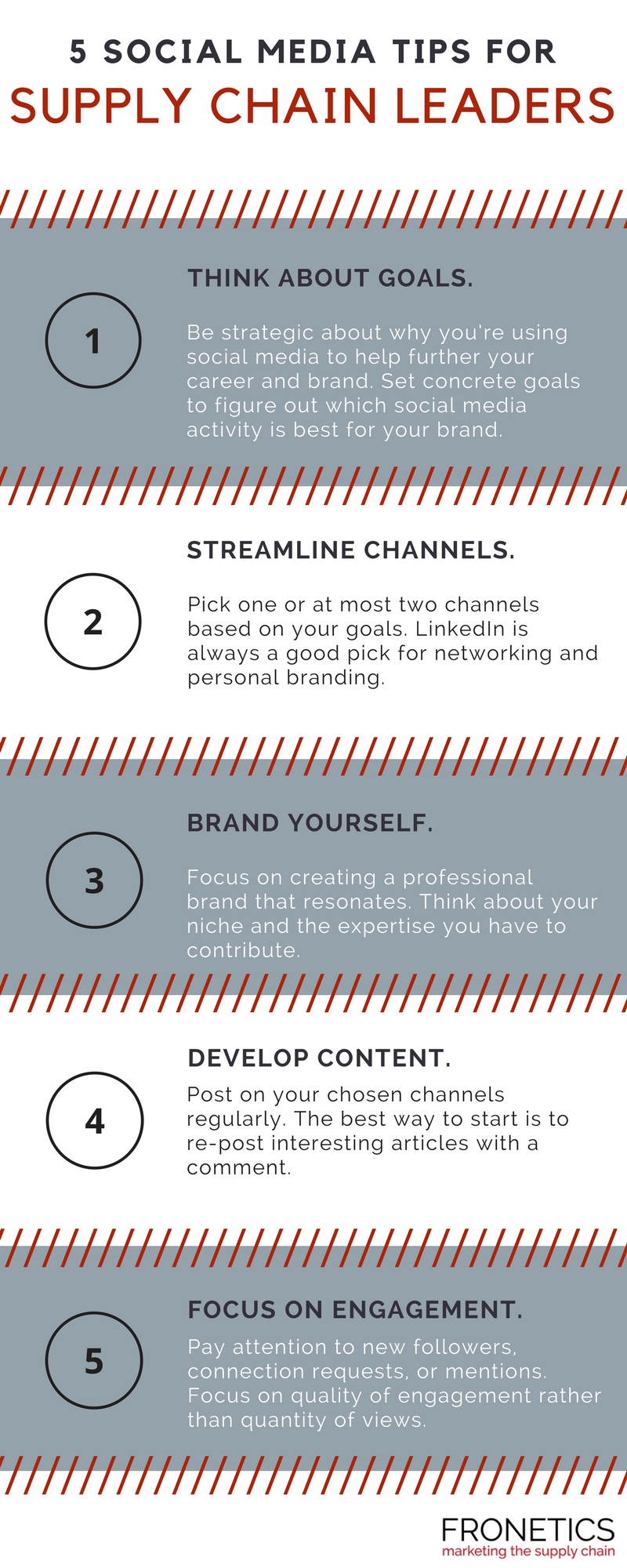
by Elizabeth Hines | Jan 3, 2025 | Leadership, Supply Chain
From the rise of AI-driven logistics to sustainability challenges, supply chain professionals face unprecedented opportunities and obstacles. To help navigate this evolving landscape, we’ve curated five thought-provoking TED Talks for the supply chain industry that offer fresh perspectives and innovative solutions for the industry. Whether you’re a seasoned logistics expert or new to the field, these presentations deliver valuable insights into the future of supply chain management, featuring speakers who are reshaping how we think about everything from last-mile delivery to circular economy principles.
Here are 5 TED Talks for the Supply Chain
1) How to Fix Broken Supply Chains
By Dustin Burke
Supply chain challenges are real, but they’re not new, says global trade expert Dustin Burke. In the face of disruptions ranging from natural disasters to pandemics, how do we make sure supply chains can keep up? Burke offers a combination of solutions — from companies sharing risk to better forecasting disruptions — to help create a more resilient, efficient tomorrow.
Listen now >>
2) How Supply Chain Transparency Can Help the Planet
By Markus Mutz
Given the option, few would choose to buy products that harm the earth — yet it’s nearly impossible to know how most consumer goods are made or where they’re sourced from. That’s about to change, says supply chain innovator Markus Mutz. He shares how he used blockchain technology to track Patagonian toothfish on their journey from ocean to dinner plate — and proved it’s possible to offer consumers a product they can trust.
Listen now >>
3) Overcoming Fear in Manufacturing
By Katie Armstrong
Manufacturing has used relatively the same methodologies for improvements since the 1940s. There is a huge emphasis on quality in highly regulated industries such as semiconductor and automotive manufacturing. In recent years, these industries have struggled to keep up with the innovation pace that the market demands. These industries are starting to be driven by a fear of failure rather than a passion for creating value for the customer. What would the world look like if we stopped letting fear dictate our decision-making? Katie Armstrong is pursuing a part-time MBA at Bentley University and is the graduate winner of the 2022 BentleyU TEDx speaker competition. She currently works as a supplier quality engineer in the semiconductor industry and has experience working in automotive manufacturing as well. Katie is passionate about technological innovation and the positive benefits of change in manufacturing. When not working or at school, Katie enjoys hiking, rock climbing, backpacking, and anything else outdoors. This talk was given at a TEDx event using the TED conference format but independently organized by a local community.
Listen now >>
4) The Next Wave of Innovation in Freight
By Oren Zaslansky
Throughout the U.S., millions of freight trucks are buzzing goods across state lines, producing massive amounts of greenhouse emissions — and some of them are only half full. Working to make this 400-billion-dollar-a-year supply chain process as efficient and sustainable as possible, freight expert Oren Zaslansky digs into the logistics of filling these trucks to their maximum capacity through algorithmic carpooling (think: ride-sharing your freight) — bringing with it the potential of a more transparent and eco-friendly global supply chain.
Listen now >>
5) Why Rivals Are Working Together to Transform Shipping
By Bo Cerup-Simonsen
What would it take to make global supply chains cleaner and greener? Bo Cerup-Simonsen — who’s helping decarbonize the maritime industry as CEO of the Mærsk Mc-Kinney Møller Center for Zero Carbon Shipping — discusses why tenacious collaboration is key to orchestrating systemic change. In conversation with TED’s Lindsay Levin, he shares important lessons on collective problem-solving and decision-making that could benefit any industry making a green transition.
Listen now >>
Each of these TED Talks for the supply chain brings unique insights to the complex world of supply chain management. By incorporating these diverse perspectives – from technological innovation to human psychology – supply chain professionals can build more resilient, sustainable, and efficient operations for the future.
Read more:

by Fronetics | Sep 17, 2019 | Big Data, Blog, Data/Analytics, Internet of Things, Robotics & Automation, Supply Chain
Machine learning is shaping the future of supply chain and logistics management, improving accuracy, speed, scale, and more. Here’s how.
Highlights:
- Machine learning refers to an application of artificial intelligence that lets systems learn and improve automatically based on experience.
- Experts predict that 95% of supply chain planning vendors will rely on supervised and unsupervised machine learning for their solutions by 2020.
- When paired with the Internet of Things, machine learning can provide cost savings around $6 million per year.
When it comes to the future of the supply chain, machine learning is one of the most exciting applications of artificial intelligence (AI) technology out there today. Machine learning is a mode of data analysis that provides systems with the ability to learn and improve automatically from experience, without being specifically programmed.
Gartner recently projected that by 2020, 95% of supply chain planning vendors will rely on supervised and unsupervised machine learning for their solutions. Furthermore, it isn’t just expert predictions that demonstrate the impact and potential of machine learning for the supply chain. Amazon, for example, is using machine learning to improve accuracy, speed, and scale for its Kiva robotics, and DHL relies on machine learning to power its Predictive Network Management system.
So, what is it about machine learning that makes it ideally suited to meet the challenges commonly faced by supply chain companies? The answer lies in the fact that machine learning algorithms are brilliant at detecting patterns, anomalies, and predictive insights. This makes it the ideal technology to help supply chain companies forecast error rates, reduce costs, improve demand planning productivity, and increase on-time shipments.
Here’s how these remarkable technologies are already revolutionizing supply chain management.
7 ways machine learning is improving supply chain management
1) Logistic solutions
Particularly when it comes to resource scheduling systems, machine learning algorithms are driving the next generation of logistics technologies. An April 2019 report from McKinsey predicts that “machine learning’s most significant contributions will be in providing supply chain operators with more significant insights into how supply chain performance can be improved, anticipating anomalies in logistics costs and performance before they occur.”
2) Internet of Things
The Internet of Things (IoT)’s sensors, intelligent transport systems, and traffic data generate a tremendous variation in data sets. Machine learning has the potential to deliver increased value by analyzing these data sets, thereby optimizing logistics and ensuring that materials arrive timely.
Additionally, machine learning can reduce logistics costs by uncovering patterns in track-and-trace data captured through IoT-enabled sensors. A December 2018 study by Boston Consulting Group determined that pairing machine learning (specifically Blockchain) with the IoT can contribute to cost savings of $6 million per year.
3) Preventing privileged credential abuse
A recent article in Forbes points to privileged credential abuse as “the leading cause of security breaches across global supply chains.” Machine learning can prevent these abuses by verifying the identity of anyone requesting access, as well as the context of the request and, most importantly, the risk associated with the access environment.
4) Reducing fraud potential
In addition to reducing risk and improving product and process quality, machine learning can reduce the potential for fraud in the supply chain. For example, machine learning startup Inspectorio is a solution to the problems “that a lack of inspection and supply chain visibility creates, focusing on how they can solve them immediately for brands and retailers.” Their algorithm provides insights that instantaneously reduce the risk of fraud.
5) Reducing forecast errors
According to a recent report from Digital/McKinsey, “Lost sales due to products not being available are being reduced up to 65% through the use of machine learning-based planning and optimization techniques.” The same report observes that “inventory reductions of 20 to 50% are being achieved today when machine learning-based supply chain management systems are used.”
6) Detecting inconsistent supplier quality levels
Machine learning can help manufacturers combat one of the biggest problems they face today, namely a lack of consistent quality and delivery performance from suppliers. These technologies can quickly detect and address errors, as well as determine highest and lowest performing suppliers.
7) Preventative maintenance
Preventative maintenance is a tremendous strategic asset for the supply chain. And, when paired with machine learning, it “allows for better prediction and avoidance of machine failure by combining data from the advanced IoT sensors and maintenance logs as well as external sources,” according to the same Digital/McKinsey study mentioned above. Not only that, “asset productivity increases of up to 20% are possible, and overall maintenance costs may be reduced by up to 10%.”
The bottom line: machine learning is reinventing supply chain management
Not only has machine learning already realized tremendous value for the supply chain, but the very nature of this technology means that the possibilities are virtually endless. Algorithms continue to become more sophisticated, and, as new challenges arise, machine learning grows and evolves to meet them.
Related posts:


by Elizabeth Hines | Mar 20, 2019 | Blog, Logistics, Robotics & Automation, Supply Chain
With the power to drastically increase efficiency in all areas of the supply chain, it’s important brands are exploring the benefits of AI. Here are four examples of how AI can benefit your supply chain.
Highlights:
- It’s estimated that supply chain firms could gain $1.3 to $2 trillion a year from using AI.
- Machine learning has the ability to quickly discover patterns in supply chain data by relying on algorithms and constraint-based modeling to find the most influential factors.
- The increasing popularity of chatbots is making it harder to ignore how AI is helping shape not just the daily logistics but also the B2B marketing landscape and operational procurement for supply chain industries.
Artificial intelligence is not simply affecting supply chain management, it is revolutionizing it.
With the power to drastically increase efficiency in all areas of the supply chain, McKinsey estimates that firms could gain $1.3 trillion to $2 trillion a year from using AI in supply chain and manufacturing.
Here are 4 examples of AI and how it’s changing supply chain management for the better.
1. Autonomous transport
There’s nothing more exciting than the field of autonomous transport for SCM. We’ve all known for many years that driverless trucks have major potential to affect supply chain management and logisitics.
We aren’t there yet – and “anyone employed as a driver today will be able to retire as a driver” — but if autonomous trucking can be developed to its potential, the technology would effectively double the output of the U.S. transportation network at 25 percent of the cost.
The conversation is no longer simply talking about vehicles on the road either. Google and Rolls-Royce recently partnered to build autonomous ships too.
2. Final-mile delivery route efficiency
One doesn’t have to have a driverless vehicle, however, to use AI to optimize delivery logistics.
For example, in the “devilishly complex” task of delivering 25 packages by van, the number of possible routes adds up to around 15 septillion (that’s a trillion trillion).
That’s where route optimization software and AI-powered GPS tools like ORION — which UPS uses to create the most efficient routes for its fleet — are making their mark. With ORION, customers, drivers and vehicles submit data to the machine, which then uses algorithms to creates the most up-to-date optimal routes depending on road conditions and other factors.
And there are also other autonomous entities out there besides cars, trucks, and ships. Robots using LIDAR technology are now being used to deliver items in crowded city environments. For example, Marble’s robots deliver medicine, groceries, and packages, and they also track their routes and the condition in order to continuously improve delivery for the next time. Additionally, last-mile solutions with drones continue to be explored due to their ability to move quickly and bypass almost all ground-level obstacles.
3. Demand forecasting, particularly for warehouse management and SCM strategy
Machine learning has the ability to quickly discover patterns in supply chain data by relying on algorithms and constraint-based modeling to find the most influential factors. This ability to find data patterns without human intervention has applications in EVERY aspect of SCM, but demand forecasting is a particularly influential component beneficiary.
Warehouse management and SCM strategy rely heavily on correct supply, demand, and inventory-based management. Forecasting engines with machine learning offer an entirely new level of intelligence and predictive analysis of big data sets that provides an endless (and constantly self-improving) loop of forecasting, overhauling the way we manage inventory and the way we create new strategies for our industries.
4. Chatbots for marketing and operational procurement
The increasing popularity of chatbots is making it harder to ignore how AI is helping shape not just the daily logistics but also the B2B marketing landscape and operational procurement for supply chain industries.
A chatbot is a computer program that simulates human conversation using auditory or textual methods. It communicates with your customer inside a messaging app, like Facebook Messenger, and is similar to email marketing without landing in an inbox. Mimicking a human conversation, chatbots currently allow for increased customer engagement through messaging app technology that isn’t yet saturated with marketing. They are just one of the many ways to integrate AI and marketing.
There’s so much more than these 4 examples to consider when discussing AI and the supply chain: prediction of delivery arrival times to the warehouse and to the customer, cargo sensors, automated purchasing, financial applications…the list literally may be endless.
Choosing what to focus on for this article, and more importantly, for all supply chain and logistics businesses, is a tough decision, but one thing is clear: in the “arms race” to leverage AI in SCM, some will come out on top and some will be left behind.
This post originally appeared on EBN Online.
Related posts:


by Fronetics | Feb 12, 2019 | Blog, Marketing, Social Media, Supply Chain
Transparency in your supply chain through social media outlets can give a look inside your company in a way that your customers are craving.
Highlights:
- Customers have been demanding more visibility into supply chains of the products they purchase.
- Through social channels like Twitter , LinkedIn , and Facebook, companies are greatly enhancing their two-way communication with customers and sharing information with their stakeholders.
- The top reason that supply chain companies are choosing to participate in social media is to increase the visibility of their company.
Supply chain management is such a complicated web of factors that most companies choose to keep operations behind the scenes and unveil a finished product with an intense marketing roll-out.
But what if that’s backwards and an outdated approach to marketing? (Hint: It is.)
The complexity of supply chain management
There is no question that SCM can be deeply and frustratingly complex. Consider TechTarget’s definition of SCM: “the broad range of activities required to plan, control and execute a product’s flow, from acquiring raw materials and production through distribution to the final customer, in the most streamlined and cost-effective way.”
With so much intense analysis at every step, the details your supply chain management (SCM) team considers can seem endless, and the impressive knowledge they hold is certainly not something most people can understand.
Or can they? What if that mindset – the one that thinks that your SCM is so complex that it wouldn’t interest or be able to be grasped by your customers – is wrong?
In fact, what if it’s so wrong that you are missing something important? Customers today want to understand your supply chain.
Transparency in your supply chain
A common misconception is that most customers are interested in a final product. Of course, your final product better be outstanding, but there are other factors fueling today’s buyers, business-to-business (B2B) customers included.
For a few years now, customers have been demanding more visibility into supply chains of the products they purchase. For example, they want to ensure sustainable practices around the earth’s scarce resources, to know where their food is sourced, and to confirm ethical pay and conditions for any laborers involved. B2B buyers are no exception. They want their vendors to be more than just a final product too, and are constantly searching for value outside the sales funnel.
Transparency with social media
What if you shared what fueled your daily SCM decisions with your customers, stakeholders, and suppliers? Not every last complex detail…but some of them, and the intangibles too:
- What drives SCM decisions besides cost?
- Who is your SC team?
- Where are you sourcing?
- Why do you do things as you do during production?
Transparency of SCM through social media outlets can give a look inside your company in a way that your customers are craving. Through social channels like Twitter , LinkedIn , and Facebook, companies are greatly enhancing their two-way communication with customers and sharing information with their stakeholders.
Of course, the benefits of social media to SCM don’t stop there.The supply chain needs social media for enhanced customer communication, increased industry education, and an ability to socially monitor the market. Social media has the capability to empower your supply chain in multiple ways.
According to a survey we conducted, the top reason that supply chain companies are choosing to participate in social media is to increasing the visibility of their company (95%). Don’t simply focus on your final product(s) and leave out your supply chain! When you make your supply chain transparent to your customers and stakeholders, everyone wins.
This post originally appeared on EBN Online.
Related posts:

by Fronetics | Apr 25, 2018 | Blog, Content Marketing, Logistics, Marketing, Social Media, Supply Chain
Supply chain leaders should use these 5 social media tips to grow brand awareness and increase your company’s profile as an employer.
Like most busy executives, it’s hard to find time for your daily tasks and projects without adding social media into the mix. But having a presence on social media is no longer optional for leaders. It’s a necessity.
Though branding might not come easily for some supply chain management executives, it is key in today’s digital world for positioning yourself as a thought leader in your industry, as well as gaining positive traction as an employer.
We’ve talked a lot about the supply chain talent gap. Here’s where a consistent, informative social media presence could help you and your company.
Millennials in the workforce are more likely to apply for jobs with companies that have a strong social media presence. They want to work for leaders that are openly posting about industry trends, collaborating with competitors, and working toward innovative products and services. What better way to highlight your role as an industry leader than through social media?
Getting started can be intimidating. There are lots of different social media channels. And even more options regarding content within those channels. Do you start a blog? Post on Twitter? Upload videos to YouTube? It’s not as easy as just writing a few blog posts and throwing them up on Facebook.
So how do you get started cultivating a social media presence? Here are 5 tips to help any supply chain leader.
Infographic: 5 social media tips for supply chain leaders

(Made with Canva)
Don’t let the hype of social media deter you. A strong personal brand is a major asset to any executive or aspiring executive. It doesn’t have to be a chore. It can become a fun and fulfilling part of your work routine, and it pays off. We hope these tips are useful even if you’ve been active on social media in a professional capacity before!
Related posts:









